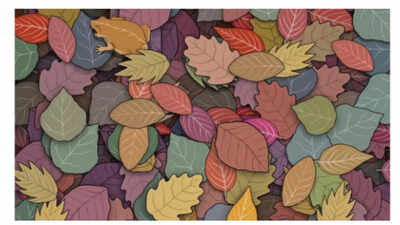
Optical illusions get our brain to exercise, and can be the perfect test of our observational skills and keen eye. An optical illusion is a visual phenomenon where the brain misinterprets what the eyes perceive.
It occurs when the information sent by the eyes conflicts with how the brain processes and understands what it sees. These illusions often trick us into seeing things that are not there, or perceiving objects differently from reality. For example, a still image might appear to move, or two shapes may seem unequal in size even though they are identical.Can you spot a hidden frog here?This picture includes some colorful foliage that has been splattered across.
A pretty sight indeed! However, amongst the bed of autumn leaves, a sneaky frog is hiding somewhere, cleverly camouflaged and out of plain sight. However, if you have hawk eyes, you will be able to spot the frog without much problem. The catch? You have to do this in just under 5 seconds! So are you ready? Your time starts now...The revealGive up? Here's the answer. All you need to do is to look at the top left side of the picture, moving towards the middle.
There you will be able to see a frog, hidden under the foliage, but its little feet is giving him away! Look for yourself. Did you get it or not? Let us know in the comments section.Types of optical illusionsThere are three main types of optical illusions:Literal Illusions: These occur when the brain combines elements of an image to create something that doesn’t exist. For example, an image might look like two faces or a vase depending on how you interpret it.Physiological Illusions: These are caused by overstimulation of the visual system, such as excessive exposure to light, movement, or color. They can create effects like afterimages or motion illusions.Cognitive Illusions: These rely on how the brain subconsciously interprets information. Examples include illusions like the Müller-Lyer illusion, where lines appear longer or shorter due to surrounding shapes.

 11 hours ago
52
11 hours ago
52




























 English (US)
English (US)